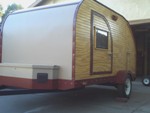New saw blade recommendations needed
18 posts
• Page 1 of 2 • 1, 2
New saw blade recommendations needed
Since it is supposed to actually reach 50 degrees this weekend, and hopefully melt all of the remaining snow, it is close to build time. So I decided last night that I should get new blades for my table saw, jig saw and circular saw. All of these blades were the blades that came with these saws, so it is time to replace. I figured newer blades would help with cleaner cuts on my TD.
After removing the blades I went online to see what the replacement cost would be. This is where my building/tool inexperience comes into place. I figured this would be an easy purchase, but nooo. There are sooooo many types of blades out there. Duh! I should have known that. Some blades have 60 teeth, some 25, some are for ripping. some for smooth cuts, etc.
So without buying a blade for every application, any recommendations on the type of blade to buy and the amount of teeth? I assume (probably wrongly again) that the jig saw blade will be easy, one metal cutting blade and one for wood. But for the table saw and circular saw I would like your opinions.
Thanks
After removing the blades I went online to see what the replacement cost would be. This is where my building/tool inexperience comes into place. I figured this would be an easy purchase, but nooo. There are sooooo many types of blades out there. Duh! I should have known that. Some blades have 60 teeth, some 25, some are for ripping. some for smooth cuts, etc.
So without buying a blade for every application, any recommendations on the type of blade to buy and the amount of teeth? I assume (probably wrongly again) that the jig saw blade will be easy, one metal cutting blade and one for wood. But for the table saw and circular saw I would like your opinions.
Thanks
- Newman39Fan
- Teardrop Advisor
- Posts: 92
- Joined: Tue Jan 26, 2010 7:31 pm
- Location: Indianapolis
Jig saw blades are not expensive, so I usually buy multiple packs for differant cuts. For my table saw, I like useing a blade with 60 teeth for general cutting,80 teeth for fine cuts. They all must be carbide tipped, but the most important is that they are sharp, dull blades not only wreck a work piece, they can be dangerous. When it comes to buying, I like Freud, they may be pricey, but I've had no problems. DeWalt is'nt bad, but they dull out faster.
If it itches. scratch it
Rick
Rick
-

satch - Donating Member
- Posts: 1198
- Images: 63
- Joined: Thu Feb 07, 2008 9:46 pm
- Location: the arm pit of Cali
